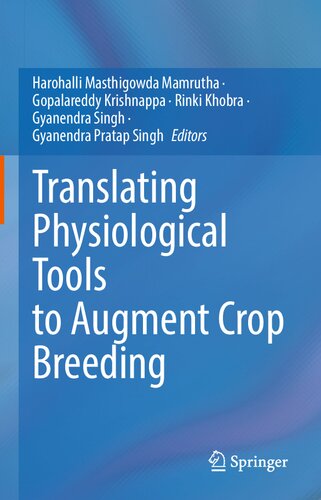

Most ebook files are in PDF format, so you can easily read them using various software such as Foxit Reader or directly on the Google Chrome browser.
Some ebook files are released by publishers in other formats such as .awz, .mobi, .epub, .fb2, etc. You may need to install specific software to read these formats on mobile/PC, such as Calibre.
Please read the tutorial at this link: https://ebookbell.com/faq
We offer FREE conversion to the popular formats you request; however, this may take some time. Therefore, right after payment, please email us, and we will try to provide the service as quickly as possible.
For some exceptional file formats or broken links (if any), please refrain from opening any disputes. Instead, email us first, and we will try to assist within a maximum of 6 hours.
EbookBell Team

4.7
16 reviewsThis book covers different physiological processes, tools, and their application in crop breeding. Each chapter emphasizes on a specific trait/physiological process and its importance in crop, their phenotyping information and how best it can be employed for crop improvement by projecting on success stories in different crops. It covers wide range of physiological topics including advances in field phenotyping, role of endophytic fungi, metabolomics, application of stable isotopes, high throughput phenomics, transpiration efficiency, root phenotyping and root exudates for improved resource use efficiency, cuticular wax and its application, advances in photosynthetic studies, leaf spectral reflectance and physiological breeding in hardy crops like millets. This book also covers the futuristic research areas like artificial intelligence and machine learning.
This contributed volume compiles all application parts of physiological tools along with their advanced research in these areas, which is very much need of the hour for both academics and researchers for ready reference. This book will be of interest to teachers, researchers, climate change scientists, capacity builders, and policy makers. Also, the book serves as additional reading material for undergraduate and graduate students of agriculture, physiology, botany, ecology, and environmental sciences. National and international agricultural scientists will also find this a useful resource.